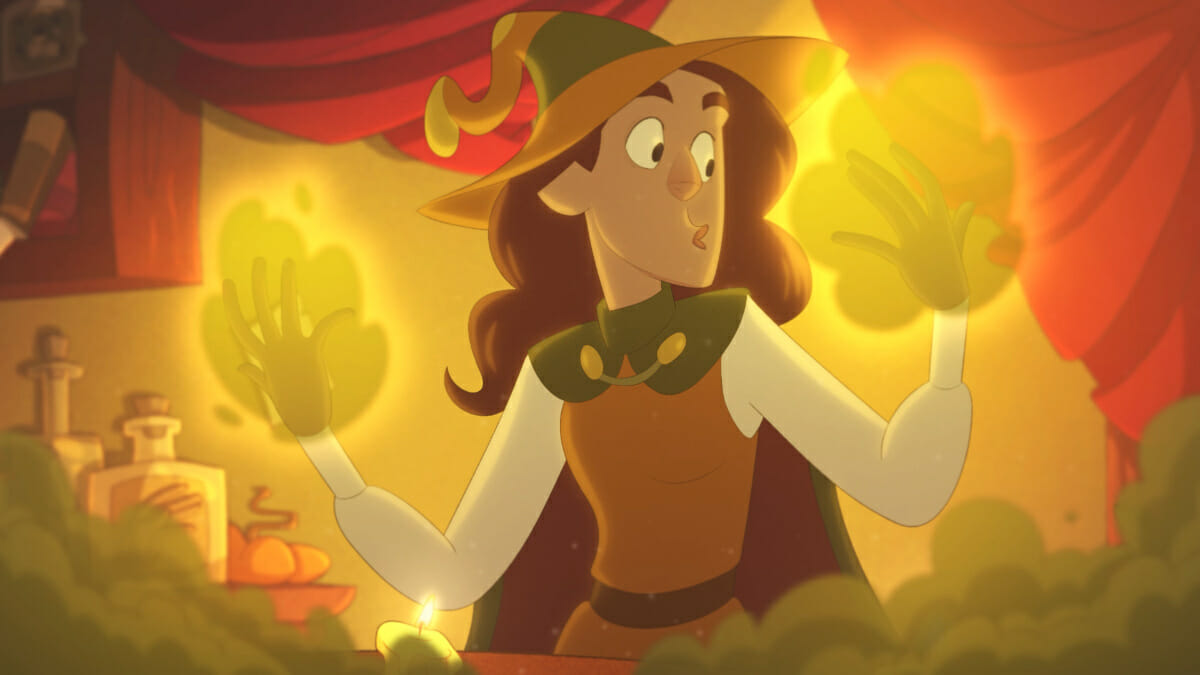
In the short film, Lucine et Balthazar, a witch casts an intense spell while her terrified familiar watches nearby. But as it turns out, the frog has nothing to fear because this witch does not have sinister intent.
From the planning and design to the animation and compositing, Angéline Beaulieu was behind every aspect of Lucine et Balthazar’s production. She made the short as her thesis film, the final assignment of her three year animation program at Cégep du Vieux Montréal. This animation program is one of the most accessible in North America, and it covers every aspect of the animation production pipeline.
We caught up with Angéline to hear about her experience in animation school, and the process of making Lucine et Balthazar.
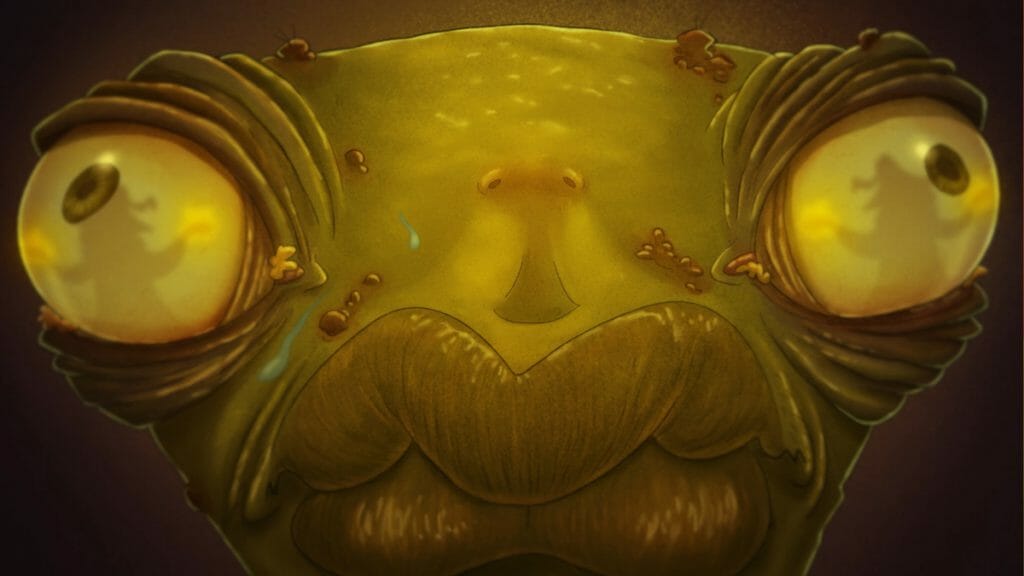
What prompted you to join the animation program at Cégep du Vieux Montréal?
When I started the program, I didn’t know a single thing about how to animate. I just loved to draw and I knew I wanted to make a career out of it. The program is 3 years long, and it takes you through the A-to-Z of animation. You learn everything about the animation pipeline from great teachers from the industry, and by the end of the program, you’ve made your first film.
At first, I found the program really intimidating, but I’m so glad I stuck with it. Aside from learning how to animate, it was really fun to meet other students who love drawing, illustration, art, and animation as much as I do.
What inspired Lucine et Balthazar‘s story?
I’ve always been into witches, Halloween, fall weather, and basically anything spooky. I knew from the start that I would make a short film that involved those themes. My goal was to create a story that was dramatic, but funny at the same time. In terms of the look of Lucine et Balthazar, I was inspired by the series Over the Garden Wall, as well as Gravity Falls; particularly for the backgrounds.
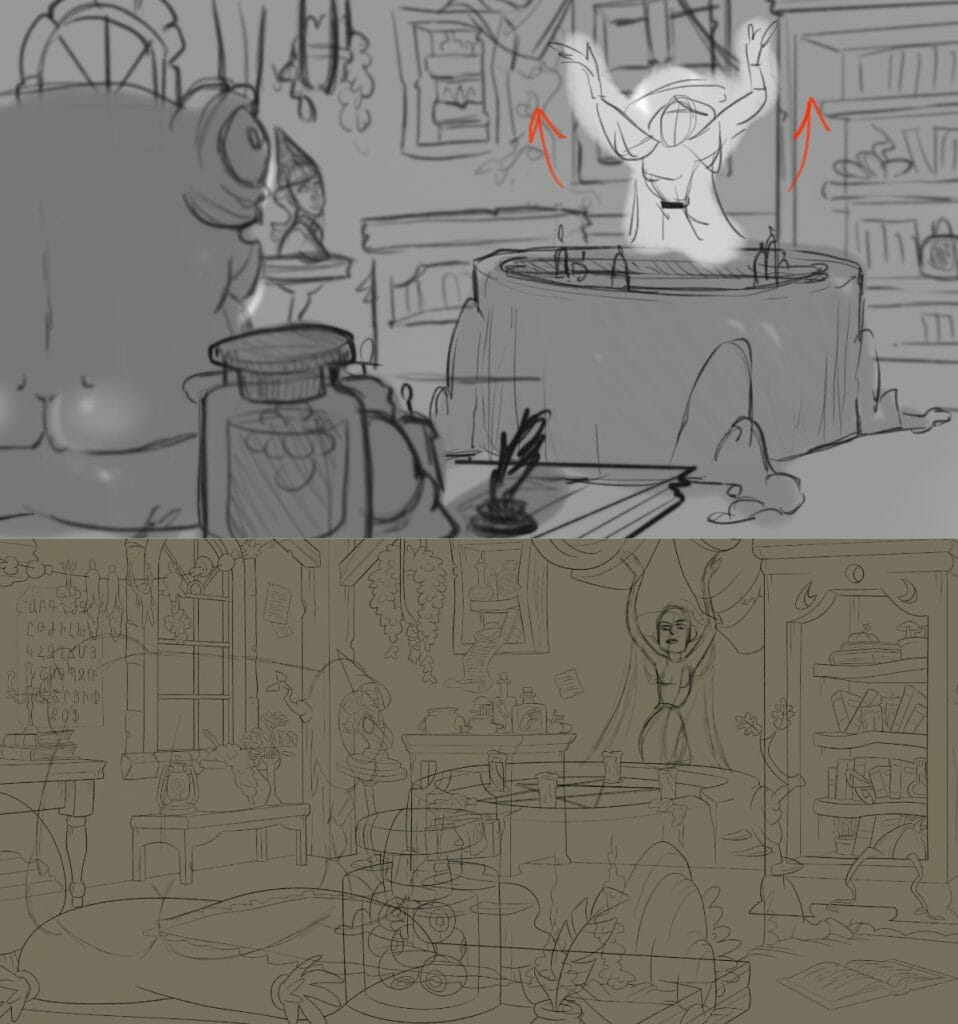
What was the most exciting part of the process of making Lucine et Balthazar?
A really exciting moment for me was when I finished the very first scene of the film. The cleanup, animation, and backgrounds were done and I had just added VFX. For the first time, I got to see my own work completed. The scene was barely even a second long, but seeing it felt so amazing. It was all me.
Making your own movie without anyone else involved makes it feel like it’s really yours because you have all of the creative agency. It’s a special experience.
What was the most challenging part of making the film, and how did you overcome that challenge?
The most challenging part was definitely being alone in the process. While it’s really special to have all the creative agency, because it makes the film so personal, it’s scary to be responsible for every single step of the animation pipeline. I remember one time thinking to myself: “I just wish someone could come and do these shadows for me.”
But when you make a film on your own, it’s fully up to you. If you don’t power through the boring or hard parts, the film doesn’t get made.
Now that I’ve had the experience of making a film by myself, I’m looking forward to working in the industry. I understand and feel comfortable with every part of the animation pipeline. And I think that will make me a stronger animator. In the industry, projects are very team-oriented, so I know I won’t be working alone again!
Lucine et Balthazar has such a studio look to it. How did you achieve the visual style?
I didn’t set out to create a specific look intentionally. I just drew in the way that comes naturally to me. I’m sure that my drawing style has been influenced by what I watched growing up, like Disney, and what I watch now. It was really interesting to me to see the different styles of my classmates in their films. I think it shows how we all are subtly influenced by different things.
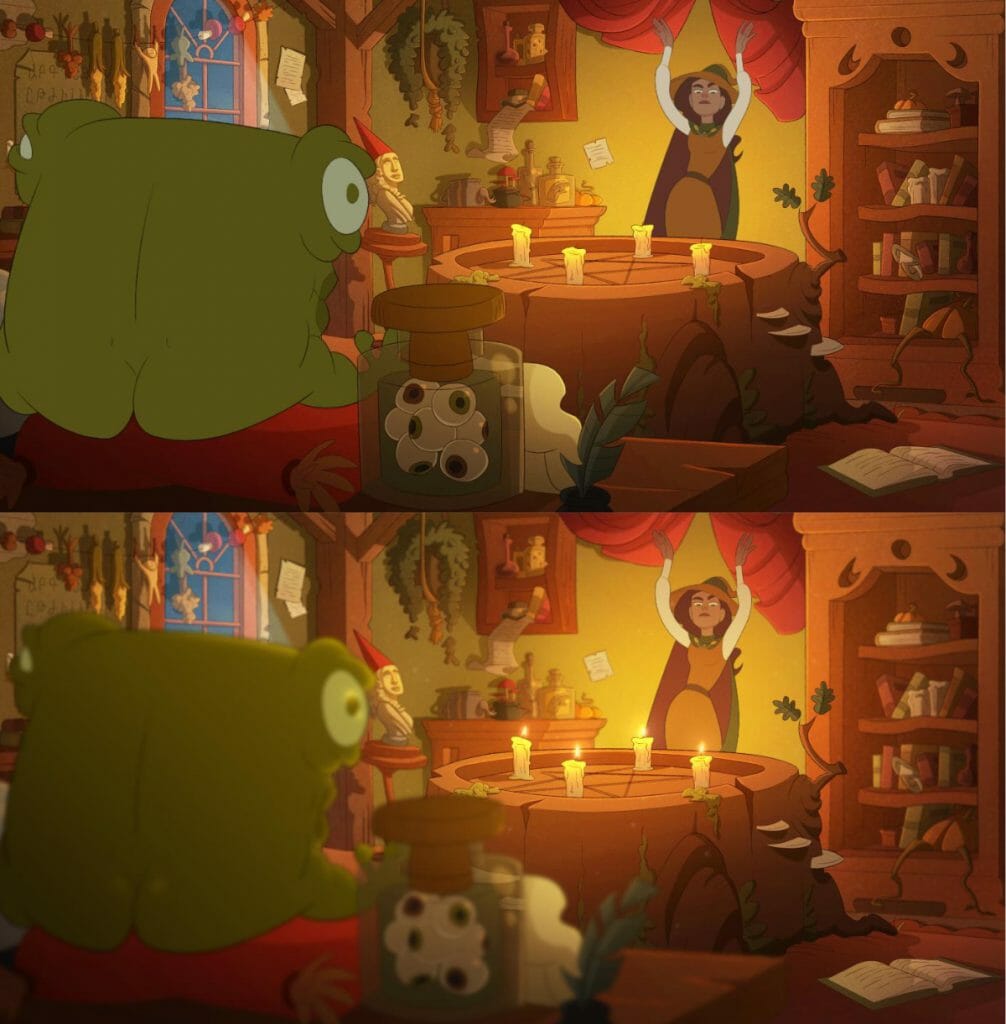
We noticed the level of detail in the film’s characters, especially in the close-up moment of the frog creature. How did you approach the design?
I had the frog in my mind forever. When I set out to draw him, I drew him just once and knew that it was him. I thought he was so funny with his two big ugly eyes, big lips, and a little butt in the back.
The witch was more challenging because I didn’t have a clear idea of where to start. I changed her design a few times. In fact, before starting production she actually looked quite different. My original design had to be simplified a lot, because I realized in production that she was too complicated to animate. Eventually I landed on a mixture of simplicity and what I had originally envisioned she would look like.
What was the most helpful feature in Toon Boom Harmony?
I remember the first time I saw Harmony. A teacher at school was showing it to us, and I was so scared that first time. I barely knew how to use Photoshop at that stage, and so Harmony seemed overwhelming. Once I actually got in there and started using it, I found that I learned it quite fast. I’m now a year into using Harmony, and I feel pretty confident in it! I love using it because it’s so efficient. Prior to Harmony, we’d been hand drawing everything, which is a slow process. Harmony speeds up the animation process because you don’t need to redraw something if the sizing is off.
My favourite tools in Harmony are the gradients and blurs. I used blurs a lot in the backgrounds, especially in the opening scene of Lucine et Balthazar, to add a depth-of-field effect. In the first scene, there’s a pan and little zoom in the forest. At first, the focus is on the plants and trees in the foreground, and then it transitions to focusing on the background, where you see the witch’s cottage. Adding blur is such a small detail but it made many of the film’s scenes look so much better.
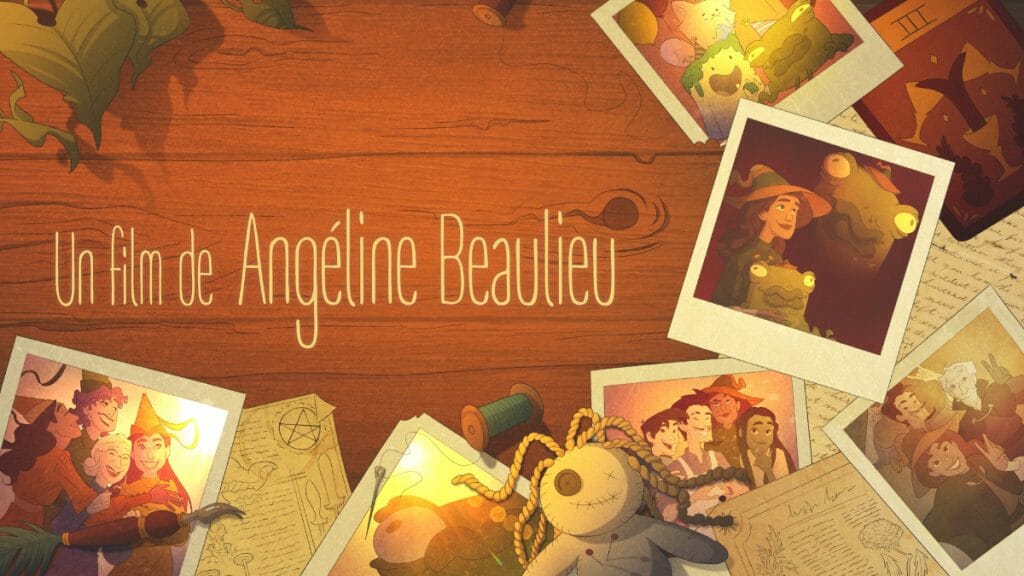
Do you have any advice for artists who would like to get into animation?
You have to believe in yourself, and you have to just do it. It took me two or three years to get accepted into my animation program. When I got rejected the first time, I didn’t let that stop me; I reapplied and did the testing all over again until I got in. It was worth the persistence, because now I’m here!
When you start trying to learn animation, or working on your thesis film, it seems like such a scary, daunting project. But once you’re actually doing it, you realize there’s no reason to be scared. I would say don’t stress too much. If you are determined to learn animation, you will learn. It just comes with dedication and time.
What’s next for you in animation?
I had so much fun in my animation program, and so I’m super excited to start my animation career. I’ve already gotten one contract in the industry, and will be starting a role at a game studio later in the summer. This is a fun moment in my career because since I’m just starting out I can really experiment and try different roles out. Having only made this one film, I don’t know yet what I’m best at. I think working in the industry is going to help me find out.
- Did you enjoy Lucine et Balthazar? Be sure to watch all of Cégep du Vieux Montréal’s 2022 thesis films through the school’s official gallery.
- Planning your thesis film? Toon Boom Animation offers discounted licenses for Harmony and Storyboard Pro to students.


